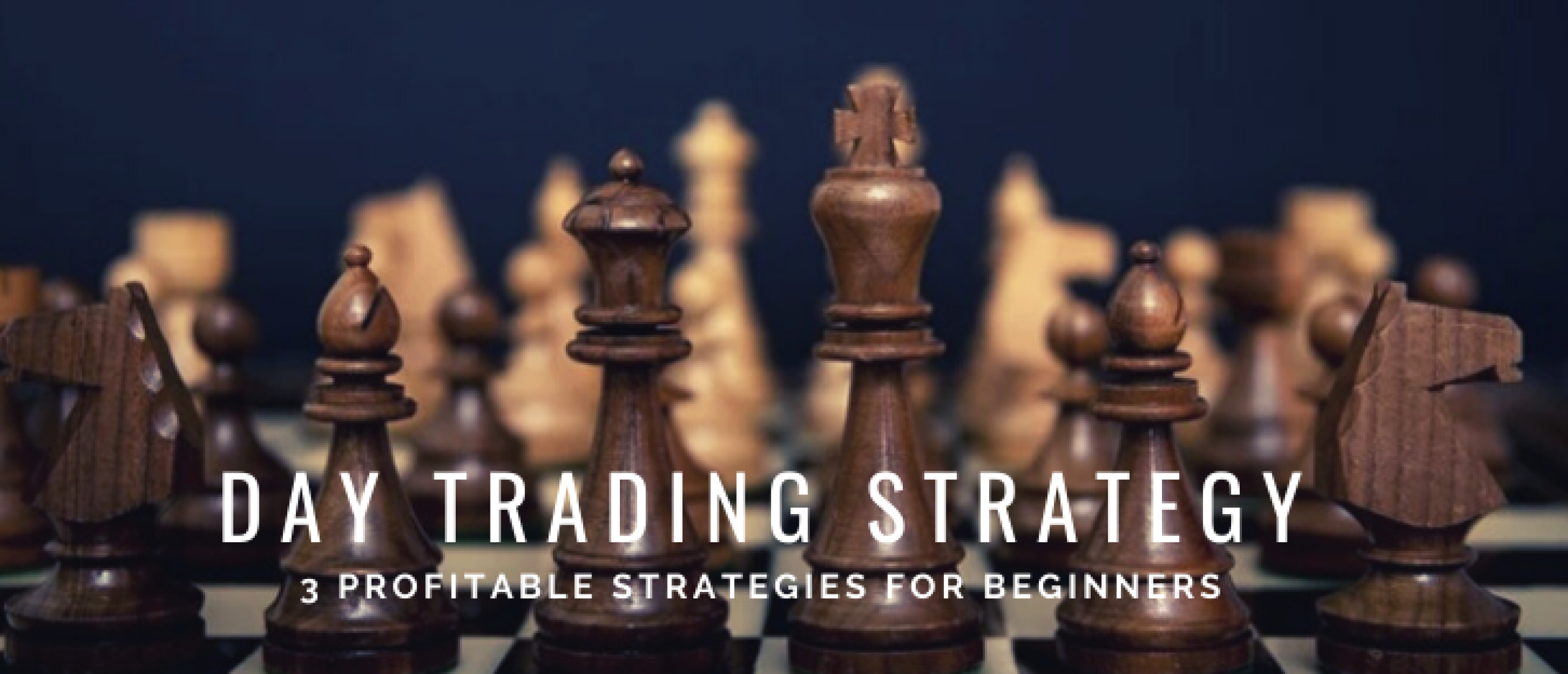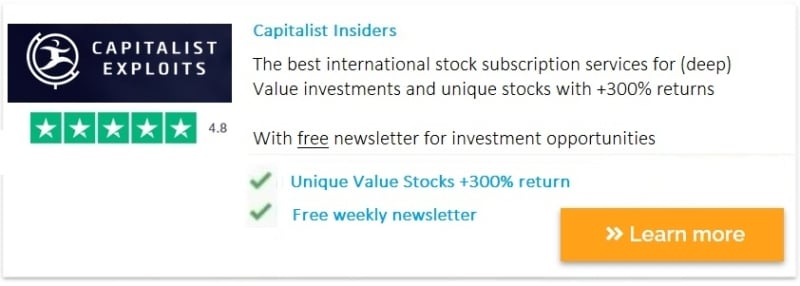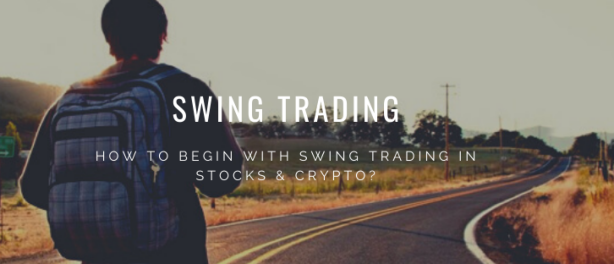Dear Happy Investor, in this article we discuss 3 profitable day trading strategies for beginners. Mastering a day trading strategy significantly increases your profit probability. And this is necessary, given the high risks involved in day trading. The success factor is in the 'strategy'. You start and perfect your day trading strategy. This is a long-term approach, involving years of practice. The better you are, the higher the chance of winning.
Let's take a look at the 3x day trading strategies for beginners!
Content
The Fundamentals of a Profitable Day Trading Strategy

All well-known day trading strategies are slightly different. However, many things are common in all of them. For example, no matter what day strategy you adopt, there is always an entry and exit point. Day trading strategies opt for pre-determined risk and reward ratios. More importantly, as by the name, every strategy is meant to be closed within a day. A profitable day trading strategy is one that requires you to stake low money while the reward is expected to be at least 2x and sometimes targeted at 5x.
After all, otherwise this is not worth the risk. Because one thing is for sure: any day trading strategy presents more risk than non-short term trading.
Technical analysis vs. Fundamental analysis
Technical analysis is more reliable for day trading because it allows you to identify short-term trading patterns and trends that can lead to a profitable trade.
Fundamental analysis is better suited for the long term because it focuses on valuation. As estimated by fundamental analysis, the gap between the real price of an asset and its intrinsic value can persist for months, if not years. In the short term, market reaction, such as news or financial reports, is unpredictable. In the long run, it is more predictable.
Day traders monitor market reactions to such fundamental data because the resulting volatility can provide trading opportunities that can be exploited using technical analysis.
We at Happy Investors do not engage in day trading. We invest only in long-term investments. For us, short term means buying and holding stocks for 6 - 18 months. However, ideally we buy stocks for the long term (>5 years). Fundamental analysis gives much more certainty because it is based on actual developments and figures. We also buy high-quality stocks based on Capitalist Exploits review. These high-quality stocks deliver minimum risk (with the right research and strategy), while they offer x5 or more returns.
3x Profitable day trading strategies for beginners

Day trading is buying and selling of a security within a single trading day. It can be executed in any exchange, although it is most prevalent in the forex and stock markets. Investing in crypto is also interesting for day traders.
Day traders are often well-educated. They use high levels of leverage and short-term trading strategies to profit from tiny price swings in highly liquid stocks or currencies.
Day traders are acutely aware of events that drive short-term market movements. Trading on the basis of news is a common strategy. Economic data, company earnings, and interest rates are all susceptible to market expectations and market psychology. When such expectations are not fulfilled or surpassed, markets respond with fast, large swings, which tremendously benefit day traders.
Note: make sure you start at reliable day trading brokers that charge fair fees.
Day Trading Strategy 1. Scalping
Scalping focuses on profiting from tiny price changes and generating a quick profit from a resale. Scalping is a term used in day trading to describe a strategy that focuses on producing high volumes off of tiny gains.
Scalping necessitates a strict exit strategy since a single major loss might wipe out the numerous little gains that the trader fought so hard to achieve. As a result, having the right tools—such as a live feed, a direct-access broker, and the ability to conduct several trades—are must for this strategy to succeed.
How Scalping Works
Scalping is predicated on the idea that the majority of stocks will finish the first stage of a rally. After that initial stage, some stocks stop rising, while others continue to rise.
A discounter takes as many tiny gains as possible. This is the inverse of the "let your profits run" mentality, which seeks to maximise positive trading outcomes by increasing the size of successful trades. This strategy produces results by increasing the number of winners while reducing the magnitude of the winnings.
It's very unusual for a trader with a longer time period to get good outcomes while only winning 50%, or even fewer, of their trades–the difference is that the wins are far larger than the losses. On the other hand, a successful stock scalper will have a significantly greater ratio of winning trades to losing trades, with earnings nearly equal to or slightly larger than losses.
Day Trading Strategy 2. Range Trading
Range trading is an active investing strategy in which the investor defines a price range in which he or she buys and sells over a short period of time. For instance, if a stock is traded at $35 and you anticipate it will increase to $40 in the next weeks, you should expect it to trade in a range between $35 and $40. You may try to range trade it by buying the stock at $35 and selling it if it climbs to $40. This method would be repeated until you believe the stock will no longer trade in this range.
How Range Trading Works
Support is a price level when demand is strong enough to prevent a stock or other investment from falling any lower. The rationale is that when the price drops and approaches support, buyers (demand) become more inclined to buy, and sellers (supply) become less willing to sell. A price level at which supply is strong enough to prevent a stock or other investment from moving higher is referred to be resistance. The rationale is that when the price increases and approaches resistance, sellers (supply) become more inclined to sell, and buyers (demand) become less eager to buy. Typically, with a range trading strategy, you buy at support and sell at resistance.
Learn more about range trading.
Day Trading Strategy 3. News-Based Trading
A news trader is a trader who bases his or her judgments on news announcements. Breaking news, economic reports, and other reported events may have a short-term impact on the price action of stocks, bonds, and other securities. News traders attempt to profit by exploiting the market before the publication of key news and/or trading on the market's reaction to the news after the fact.
News traders leverage a variety of strategies, with an emphasis on market psychology and historical data. Traders may use historical data, such as prior earnings reports, to predict how upcoming news, such as an impending financial report, will affect prices. Being acquainted with certain markets, news traders may make informed judgments as to whether a security's price will rise or fall in response to a news report.
How Trading News Works
For the most part, news traders attempt to benefit from the timing or expected content of scheduled news announcements. When the news is scheduled, such as with earnings releases or Federal Reserve meetings, news trading is more about betting on the announcement's potential relevance. Indeed, the Federal Reserve has tried to mitigate the market effect of its proclamations by foreshadowing every major policy move in advance, but even these policy signals have become tradable events.
Learn more about news trading.
These are three popular day trading strategies to get started. As an inexperienced trader, it is good to test all three. Determine what works best for you. Next, you need to specialize in one day trading strategy. Invest a lot of time in improving your skills. The better you are, the more risks you can reduce. Of course you shouldn't do this with real money, but it is sensible to practice on a demo account with fictitious money first.
Questions or remarks about these day trading strategies for beginners? Let us know in the comments below!








